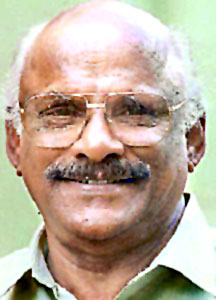 S. L. Puram Sadanandan was a spokesman of the progressive movement in Malayalam theatre. Born in 1927 S. L. Puram Sadanandan was famous for writing and directing plays with a sense of social commitment. As the theatrical version of socialist realism, his work had an accepted mode in Malayalam literature. The works by S. L. Puram Sadanandan includes short stories showed characters as types. Nevertheless, his productions depicted human problems realistically.
S. L. Puram Sadanandan was a spokesman of the progressive movement in Malayalam theatre. Born in 1927 S. L. Puram Sadanandan was famous for writing and directing plays with a sense of social commitment. As the theatrical version of socialist realism, his work had an accepted mode in Malayalam literature. The works by S. L. Puram Sadanandan includes short stories showed characters as types. Nevertheless, his productions depicted human problems realistically.
The main works of S. L. Puram Sadanandan are Ithiri mannum othiri manushyarum i.e. `Little Land, Too Many Men` in 1949, Oralkuti kallanayi i.e. `One More Turns Thief` in 1956 on unemployment, Enne sukshikkuka i.e. `Watch Me` in 1959, Chirikkatha vitukal i.e. `House with No Laughter` in 1960, Kurukshetram in 1961, Kakkapponnu i.e. `False Gold` in 1962, and Yagasala satram i.e. `Inn` in 1967. S. L. Puram Sadanandan was a prolific scenarist in Malayalam cinema for approximately 150 films. He scripted mainly melodramas as for example Kavya mela i.e. `Poetry Session` in 1965, Agniputri i.e. `Fire`s Daughter` in 1967, Kottayam kola case i.e. `Kottayam Murder Case` in 1967 and Lekhayude maranam oru flashback i.e. `Lekhds Death, a Flashback` in 1983. S. L. Puram Sadanandan won the President`s award for best screenplay in 1968.




















